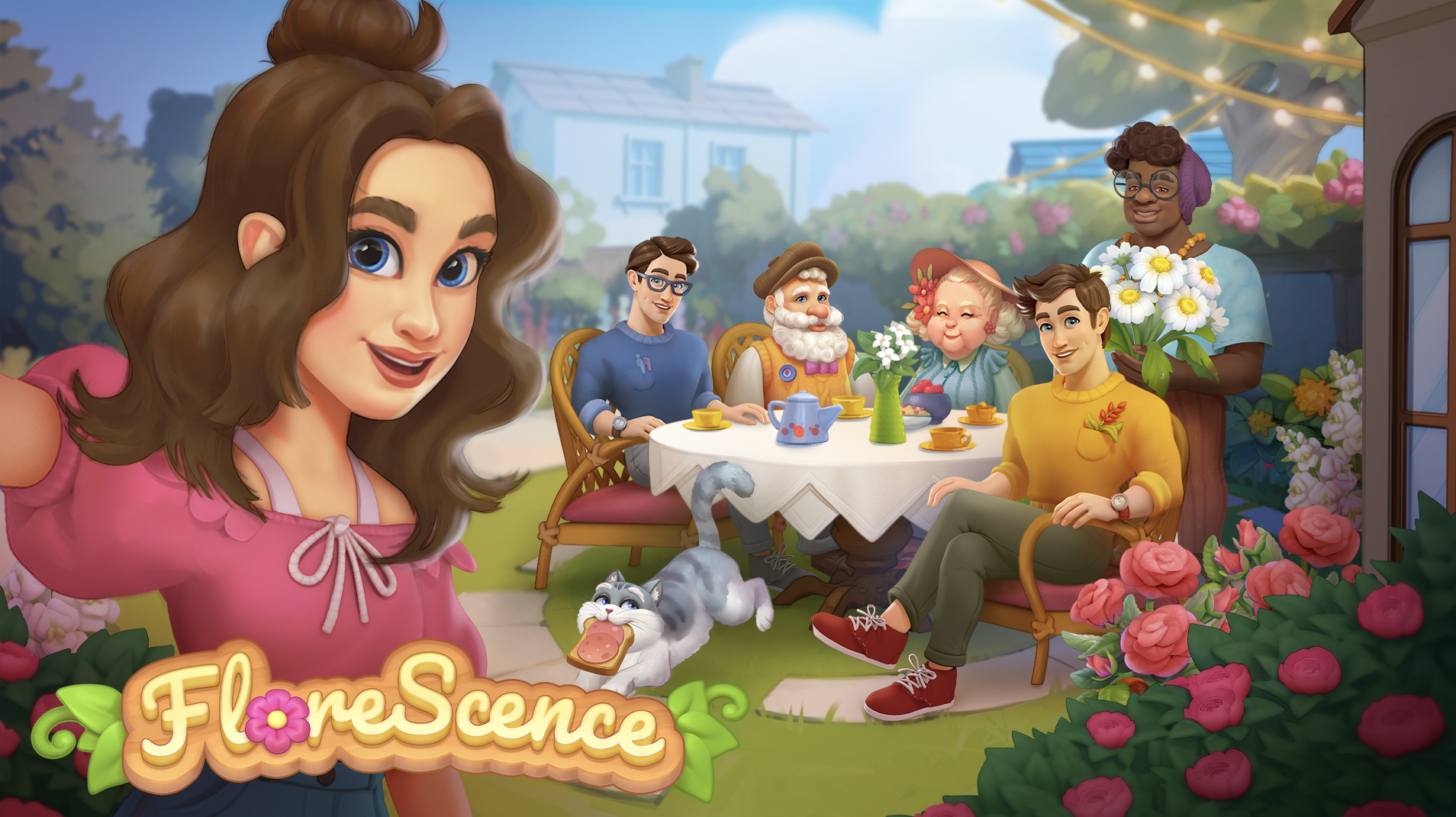Game Garden shared their experience and results of creating a personalized in-game shop with Balancy.
About Game Garden
Meet Game Garden, a mobile game studio based in Cyprus and known for its casual games, which are enjoyed by 25 million players worldwide. After the successful launch of their new title, Florescence, the time came to think about its effective monetization.
Given the current high user acquisition costs (CPI) in the market, increasing LTV through in-game purchases has become a priority task for the team. Therefore, they were looking for a user-friendly solution that would help them segment audiences and continuously experiment with the in-game shop offerings.
 |
“We see big potential in creating personalized shopping experiences for our players, and Balancy has been instrumental in following this vision. With their tools and guidance, we’ve created a dynamic in-game shop that adapts to diverse player segments and supports experimentation as we scale.” Natalia Mishulina, Producer and Creative Director at Game Garden. |
The challenge: looking to maximize IAP revenue through the in-game shop
Florescence is a merge game set in a floral greenhouse. The classic merge mechanics are well-combined with meta features such as room design, plant upgrades, and role-playing elements.
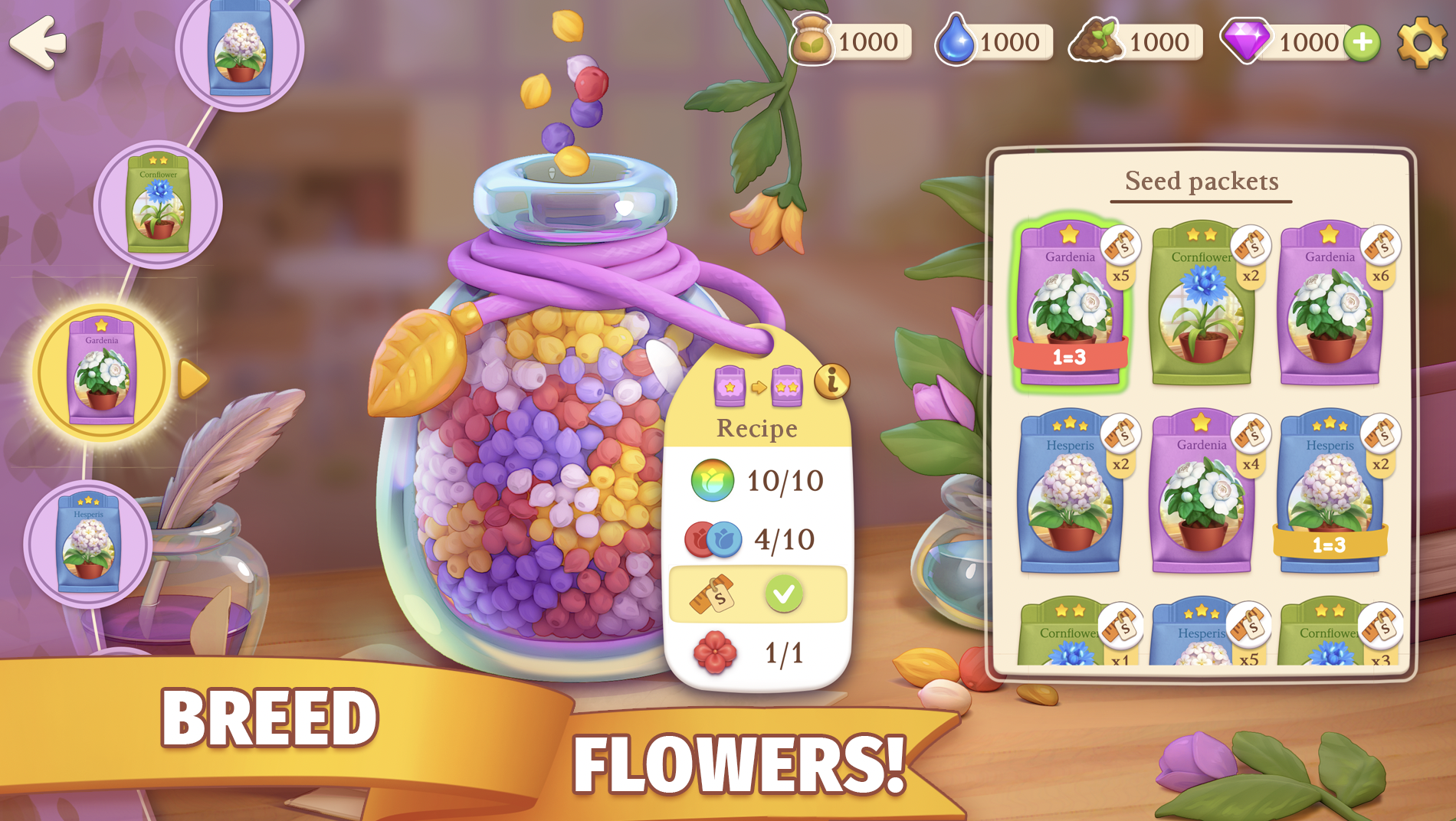
From the beginning, Florescence showed good prospects for appealing to the target audience’s taste — the colorful visual content and engaging meta elements performed well in achieving the set goals. The next important step for the team was to set up effective IAP (in-app purchase) monetization through the in-game shop.
There were several areas to work on in this regard. First, the in-game shop needed to expand its assortment and add new sections. Second, there was a lack of segmentation and personalization in the shop. Third, the shop’s architecture did not provide the developers with the necessary flexibility to conduct experiments.
Regarding the architecture, the in-game store was hardcoded, requiring lengthy app releases to conduct experiments and implement changes.


Although this basic approach to in-games hop design worked at the beginning of the game’s life, it became clear that it would not allow the project to reach its full potential while it was growing.
Game Garden turned to Balancy experts for assistance in enhancing their in-game shop. The team wanted to tailor the shop display to different player segments based on their progression, available resources, and spending habits. Balancy provided a reliable and flexible platform to build a dynamic in-game shop with personalized offerings.
The solution: dynamic in-game shop by Balancy
The modern in-game shop is a flexible and dynamic shop. Gone are the days when shops were rigidly hardcoded, showing products and offers that remained unchanged month after month. Today, segmentation, personalization, and LiveOps are critical levers for maximizing revenue and paying player retention.
At Balancy, we call this strategy a dynamic in-game shop, and we are on a mission to equip developers with all the tools needed to update and adjust their in-game shops continuously. The Balancy platform allows developers to build in-game shops and apply segmentation rules to slots and pages.
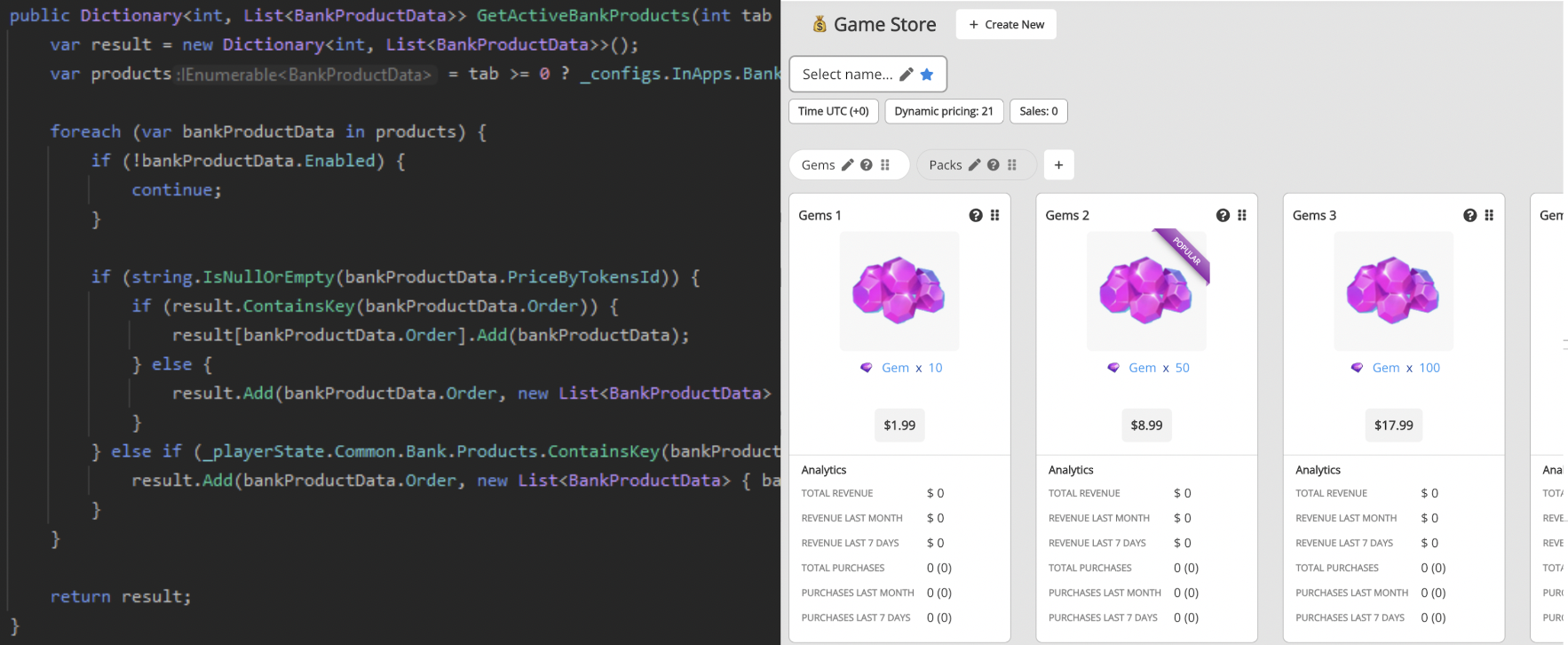
Developers start leveraging player data to segment their audience. Common segmentation criteria include spending habits, session frequency, and game progression. Beyond these essential criteria, players can also be categorized based on their in-game behavior, preferences, and interactions with the in-game shop. It’s important to keep in mind that segments should update dynamically as player behavior changes over time.
The implementation: personalizing in-game shop experience in Florescence
To create a dynamic shop in Florescence, the team migrated all packs and bundles from the old hardcoded shop to the Balancy platform. Then, they used these packs and bundles, like LEGO blocks, to create a new version of the shop’s homepage:
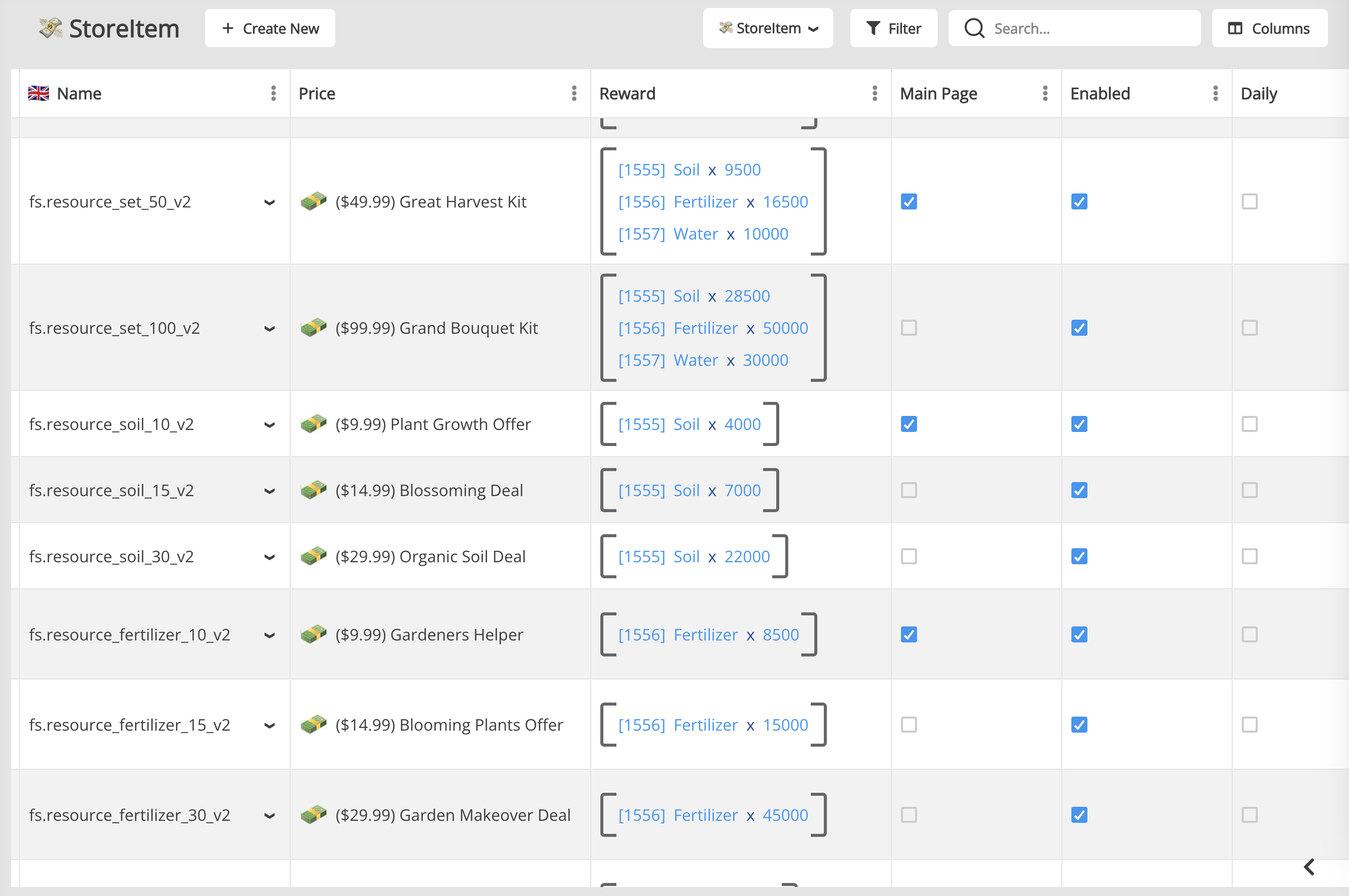
The flag in the “main page” column determines whether an item should be displayed in the default version of the shop. Additionally, a segmentation layer implemented through overrides* moves these flags under certain conditions.
* Overrides allow developers to rewrite the standard game logic to new logic under certain conditions. For example, they can change the price of items for players from a specific country, replace item icons with thematic ones during holidays, or show specific items in the shop for a particular player segment.
In the case of Florescence, segmentation is based on the player’s resource count and purchase history. The following configuration of the main page was created for players who have spent more than $30, have enough water and fertilizer resources, but have a deficit of soil (less than 2000 units):
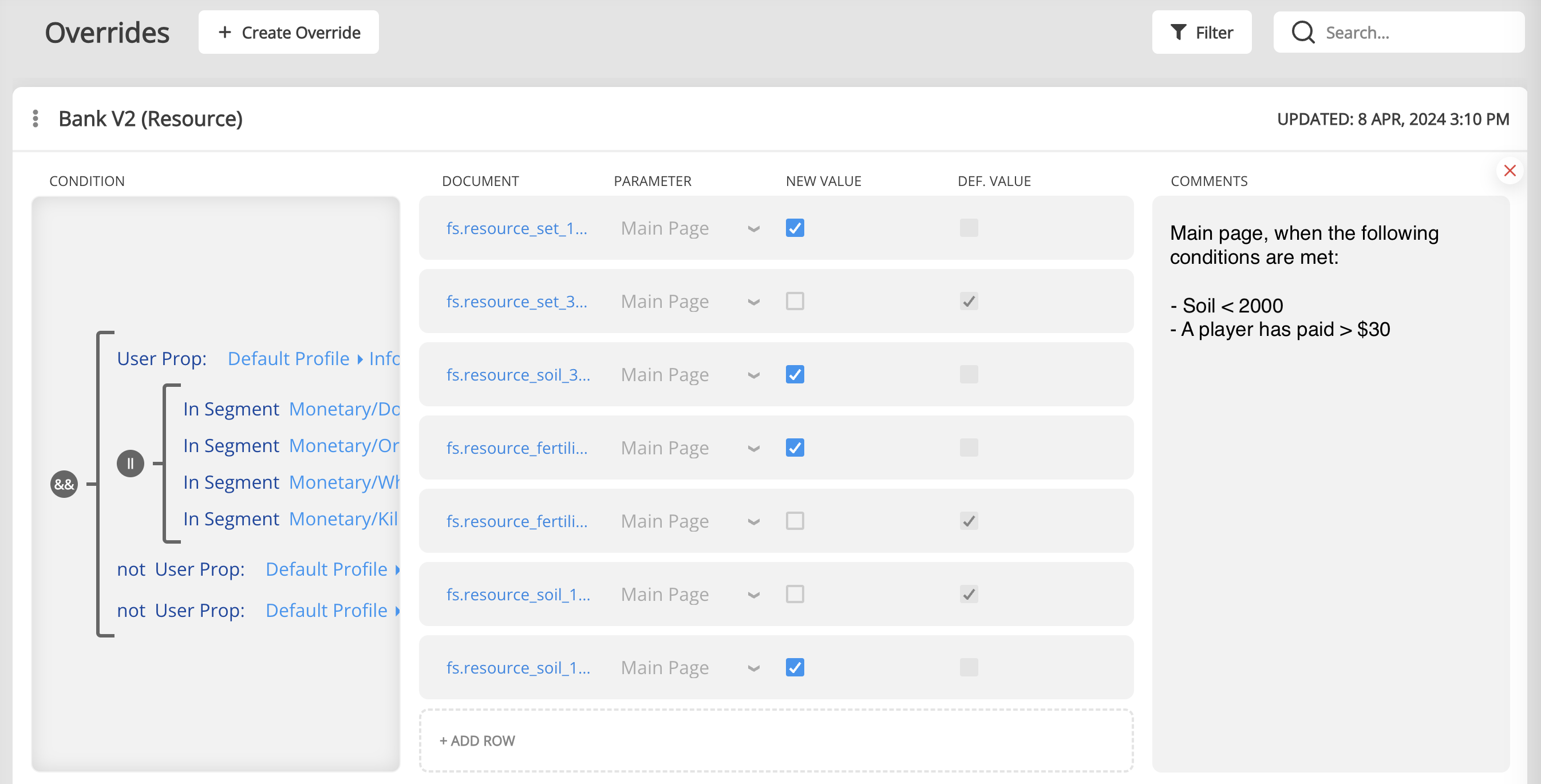
These are the conditions to address this segment of users:
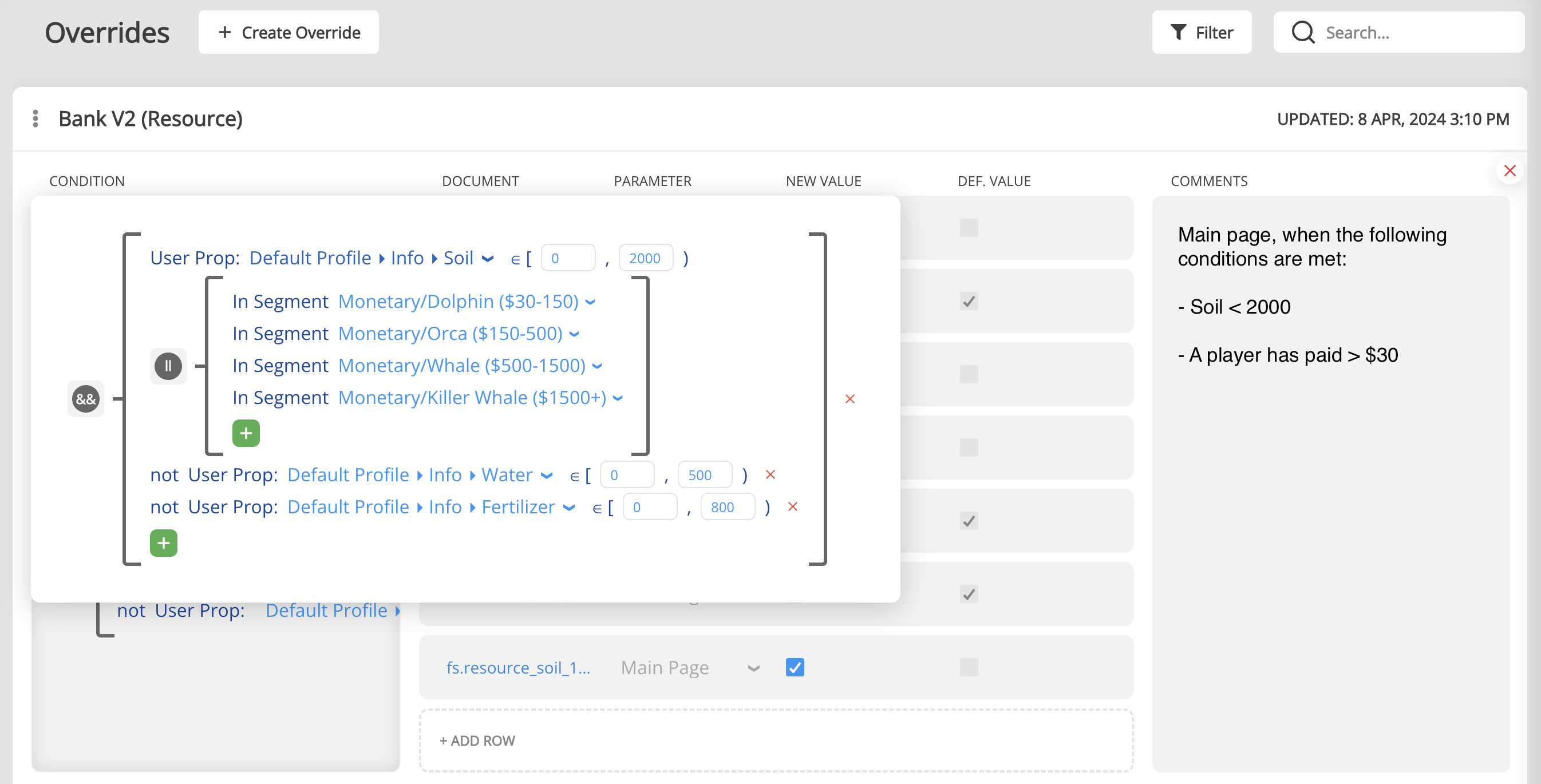
For those players who pay less, we should show less expensive offers first. Here is the main page configuration for players who also have a deficit of soil but have spent less than $30 (higher block) or are non-payers (lower block):
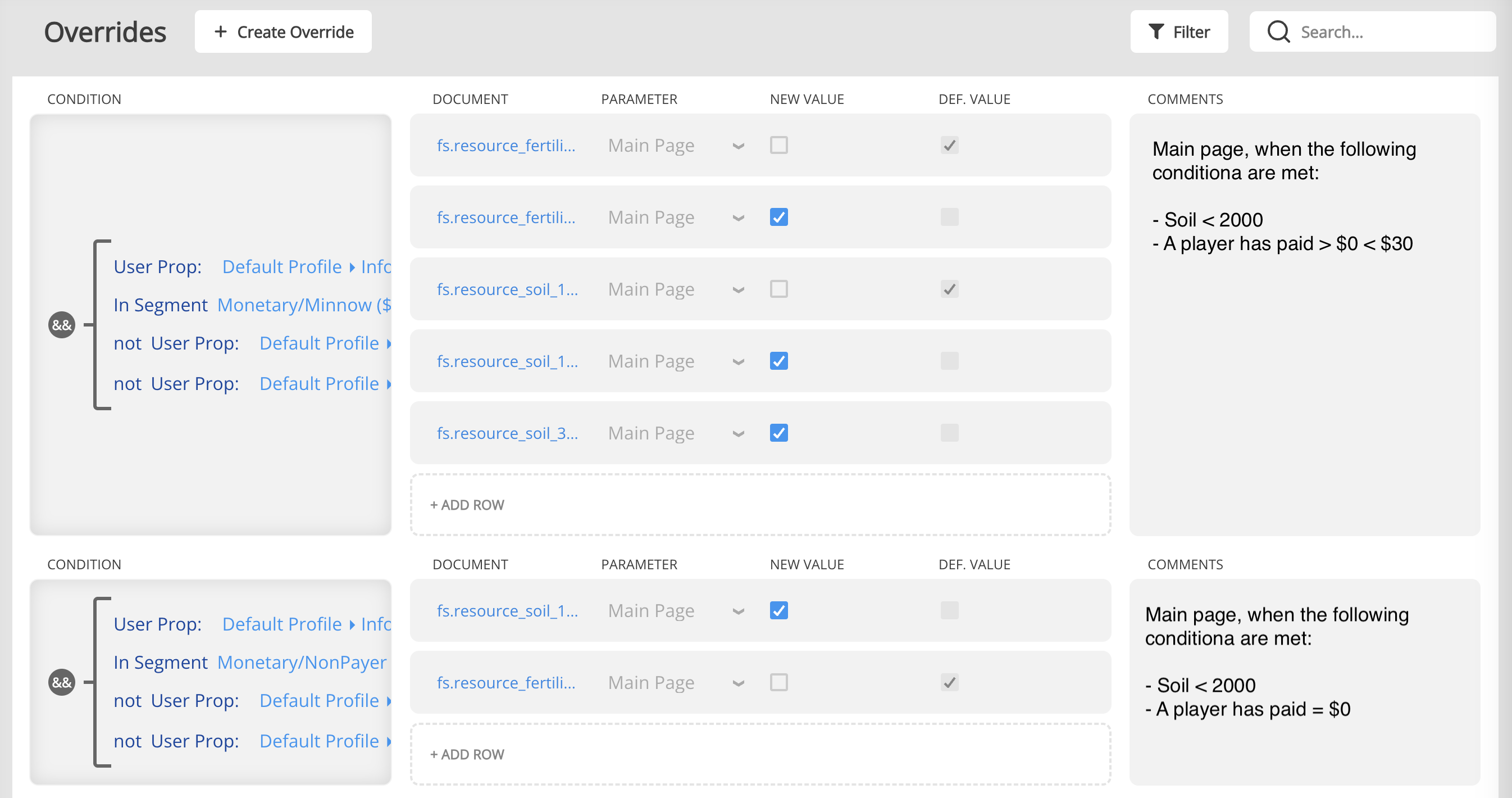
After applying the same logic for water and fertilizer resources, the shop is configured and ready to offer players the necessary resources they currently lack in the relevant amounts.
The results: in-game shop revenue grew by 41%
As a result, the in-game shop in Florescence is now personalized and changes dynamically based on the current gameplay situation. For example, after a low spender who lacks soil and fertilizer opens the shop, they see the following display:
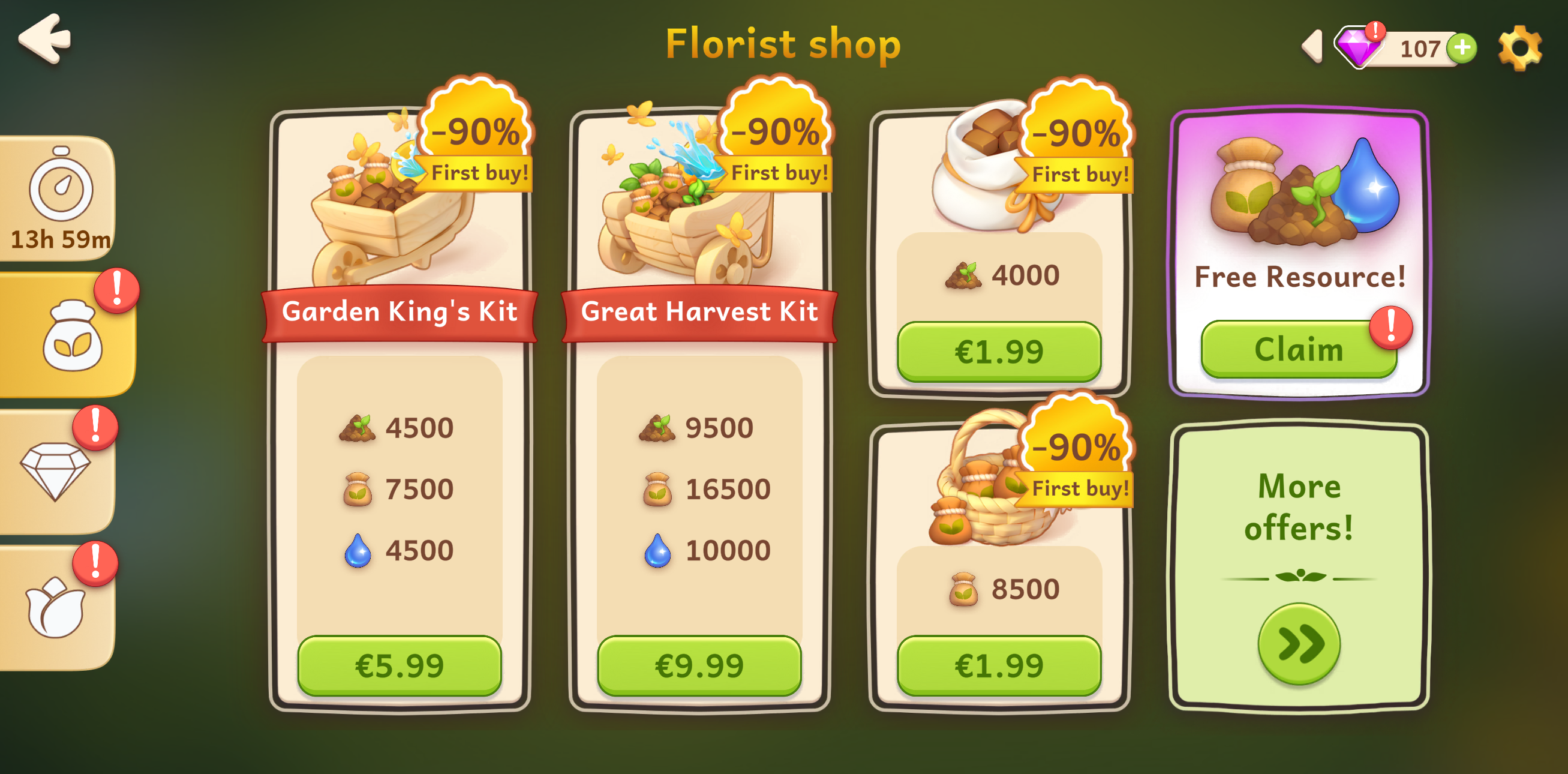
Segmentation was one of the improvements that powered up the in-game shop. In addition, the team introduced more pricing options and added thematic sections, including a daily sale section where players can purchase discounted items, but only once a day (new thematic sections are shown on the left in the screenshot above).
After working on enhancing the shop’s content and personalization, the team reported the following changes in metrics:
- Revenue from the in-game shop increased by 41%, and revenue from all offers, including the shop, increased by 11%.
- The shop’s share in the total number of purchases increased by 46%, and its share in total revenue increased by 26%.
- New “daily offers” in the in-game shop became the leader in the number of purchases among all offers, surpassing the previous leader (carousel-type offers) by 1.5 times in purchases and two times in revenue.
Positive revenue growth trends in the store are accompanied by cannibalization of other offers by the shop. Therefore, the team is gradually transitioning other offers to Balancy to enable segmentation by payer tiers. This is a potential growth point for the project.
These interim results are one stage in creating effective monetization in Florescence. The task involves many improvements and enhancements in the shop, offer system, and overall game balance. Therefore, creating a flexible foundation for future experiments was crucial at this stage.
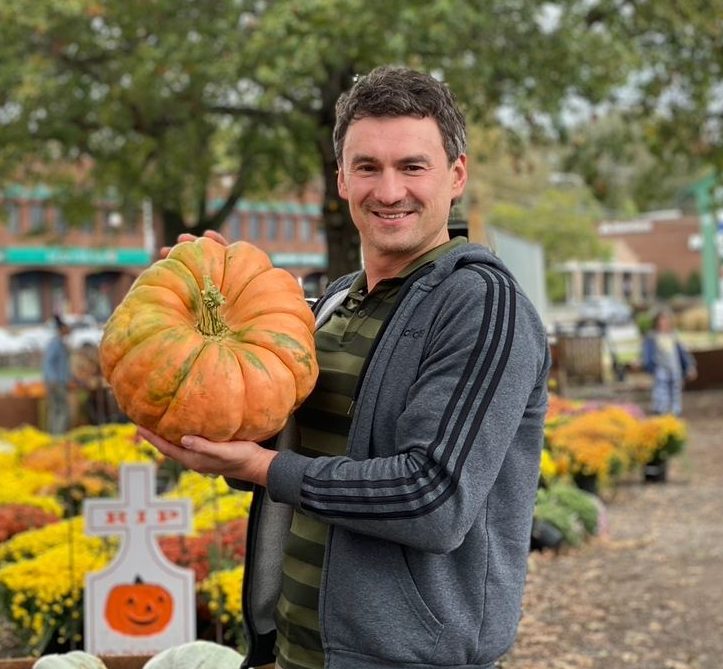 |
“Our team is always open to new technologies in the game development process. After a successful dynamic shop implementation, we plan to apply the same approach to other game features for identifying growth points quickly and immediately testing them in real-time.” Yuri Pomortsev, CEO Game Garden. |
